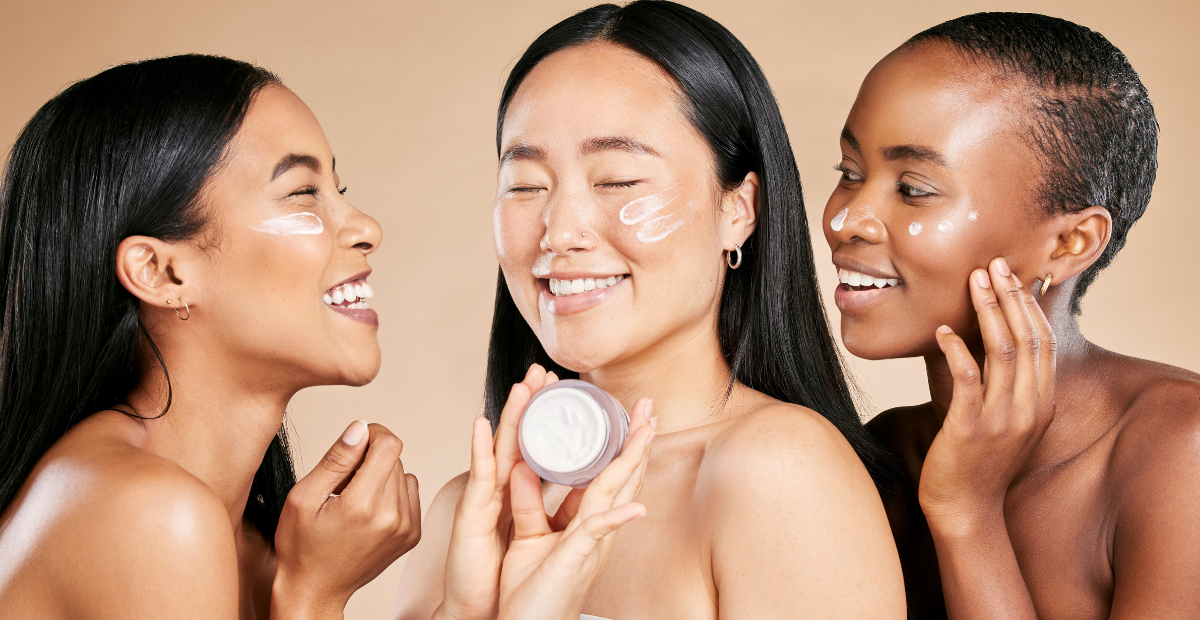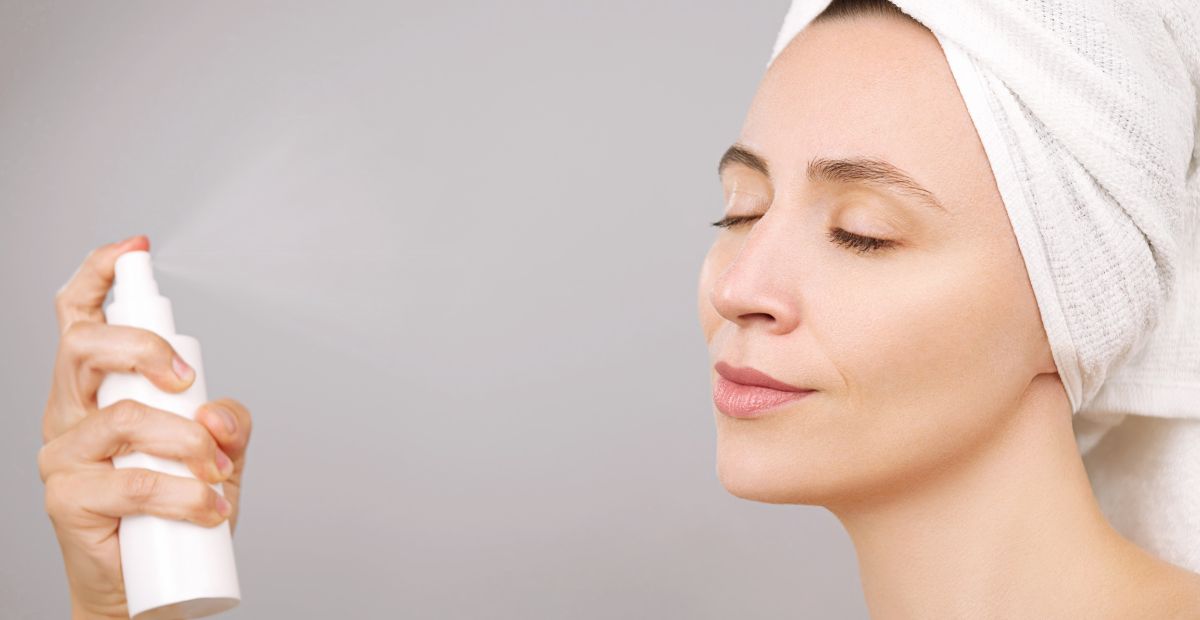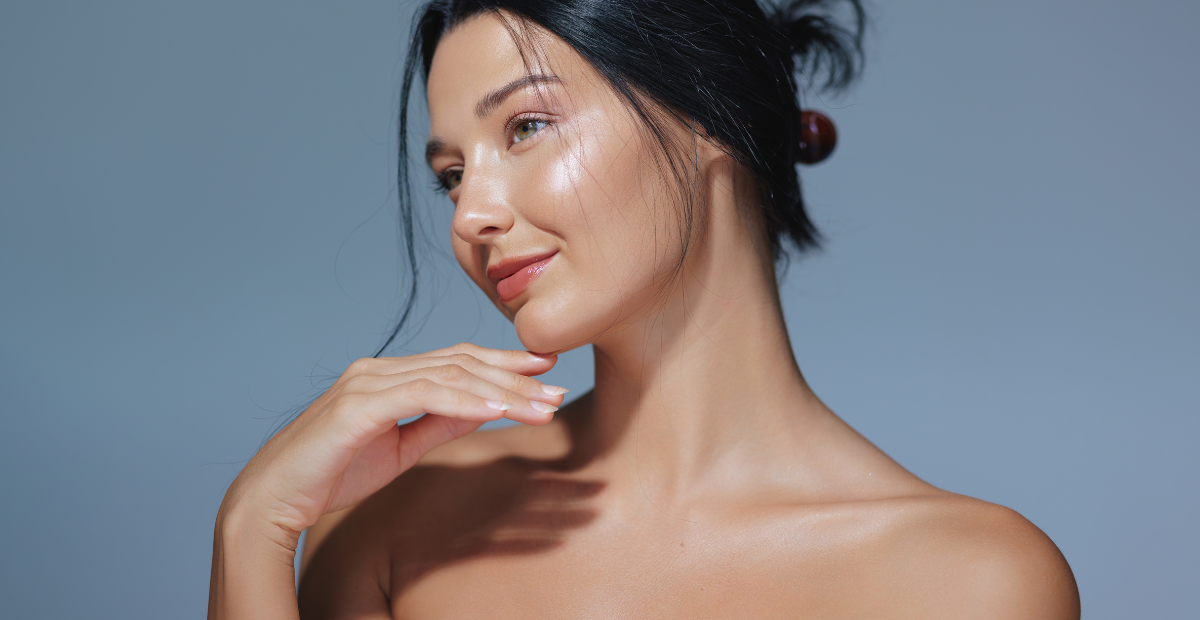Your Complete Guide to Uneven Skin Tone
Onskin Content Team
Your guides through the skincare chaos

Uneven skin tone is a common concern that can affect people of any age and skin type. In this guide, we’ll uncover the real reasons behind it and share proven, science-backed tips to help you finally achieve that glowing complexion you’ve been dreaming of.
What Is Uneven Skin Tone?
Before we start, here are two important disclaimers:
- Perfectly even skin tone isn’t naturally achievable for most people.
- That’s perfectly fine.
Actually, uneven skin tone is a collective name for a number of factors that can cause changes in your skin color. Different health issues, hormones, aging, and environmental exposure can all contribute to that.
However, if your goal is to get as close as possible to an even skin tone, it’s definitely achievable.
What Causes Uneven Skin Tone?
But let’s take it step by step and start by looking at what actually causes uneven skin tone.
Hyperpigmentation
Hyperpigmentation happens when the skin produces too much melanin, the pigment that gives your skin its color. This excess production can be triggered by a variety of factors.
Postinflammatory hyperpigmentation is one of them. It often develops after irritation, injuries, or inflammation, such as acne, eczema, or burns. This leads to dark spots or patches that can last for months or even years. Although it is more common in people with darker skin tones, it can affect anyone.

Melasma is another trigger. It results in brown or gray-brown patches, usually appearing on the cheeks, forehead, nose, upper lip, or chin. This condition is more common in women, especially during pregnancy. The overproduction of melanin is usually caused by hormonal changes, but it can also result from sun exposure, genetics, or certain medications.
Ultraviolet radiation is also on the list. UVB rays are the main trigger for hyperpigmentation because they stimulate melanin production. UVA rays play a smaller role by darkening existing pigment. However, when both types are out there (as they are in natural sunlight), they amplify each other’s effects. And yes, science backs this up.

Hypopigmentation
Hypopigmentation, in contrast to hyperpigmentation, occurs when some areas of your skin produce less melanin. This can result in lighter patches or even white spots and can be triggered by injuries, infections, some medical conditions, and genetics as well.
Aging
As we get older, our skin becomes dry and rough. This happens because the body produces less natural oil, and the skin’s protective barrier can’t hold moisture as well as its younger version did. Also, too much sun and inflammation can damage the skin over time, leading to uneven texture and tone.
How to Treat Uneven Skin Tone
As a matter of fact, there are plenty of options available. We’ll focus on the most popular ones and, more importantly, those that have been tested by scientists.
Use Sunscreen
If you’re a regular reader of our blog, you’re probably already using SPF every time you go outside, no matter the season or weather. If not, here’s just a quick reminder of the key points:
- Use an SPF of at least 30; the higher, the better.
- Apply sunscreen to dry skin about 15 minutes before going outdoors.
- Reapply approximately every two hours.
- Avoid certain chemical filters in sunscreen, especially during pregnancy. The easiest way to check if a product is safe is by using the OnSkin app. Just snap a picture of the label or barcode, and the app will instantly tell you whether the formula is safe and suitable for your skin type and concerns.
- Follow the two-finger rule. Experts recommend applying sunscreen by squeezing one strip onto your index finger and another onto your middle finger, from the base to the tip. Use this amount for each of the 11 body areas to ensure you’re getting the level of sun protection indicated on the label.

Also, keep in mind that indoor tanning isn’t recommended by medical organizations worldwide. In fact, the WHO advises that no people under 18 should use indoor sunbeds.
Hydrate Yourself
Our body needs the right amount of water to prevent dehydration. When the skin becomes too dry, it can’t function properly, loses elasticity, and becomes more prone to irritation.
Drinking water is the easiest (though not the only) way to stay hydrated. While there’s no single consensus on the exact amount we should consume, it’s generally recommended to drink at least one liter (around 34 ounces) every day.
Look for Products with Beneficial Ingredients
Vitamin C can help reduce dark spots and even out skin tone. It blocks tyrosinase, an enzyme in charge of producing melanin, and protects the skin from sun damage. Moreover, it helps produce collagen, which keeps the skin firm and smooth.
Vitamin C comes in different forms, concentrations, and levels of effectiveness. Here are a few tips to help you choose the best option.
Niacinamide, a derivative of vitamin B3, can also improve uneven skin tone. In one study, women aged 40 to 60 applied a moisturizer with 5% niacinamide to one side of their face and a placebo to the other. After 12 weeks, the side treated with niacinamide showed a visible reduction in dark spots, redness, and yellowish undertones. What’s also important is that the ingredient was well tolerated and caused no irritation.
Arbutin is a natural skin-lightening ingredient found in certain plants like bearberry, blueberry, cranberry, and lingonberry. Like vitamin C, it works by blocking tyrosinase. In one clinical study, scientists tested 1% arbutin on people with melasma, and all 10 participants showed improvement.

Tranexamic acid also works by blocking melanin production, reducing inflammation, and preventing the growth of new blood vessels that cause redness. The ingredient is mostly studied for melasma, but recent research shows it can also improve post-inflammatory hyperpigmentation, rosacea, and redness following acne.
Resveratrol not only blocks tyrosinase directly but also works in several other ways. It can suppress the gene that activates tyrosinase, block hormone signals that trigger melanin production, and reduce proteins involved in melanin formation.
It might sound surprising, but Aloe vera can also help treat uneven skin tone. Researchers tested Aloe vera extract and one of its key components, aloin, on specialized pigment cells from tadpoles, commonly used in labs to study skin pigmentation. They found that both ingredients caused melanin in these cells to clump together, making the skin lighter.
Consider a Chemical Peel
Chemical peels remove damaged layers and stimulate collagen production, helping your sun-damaged skin recover. They can also be effective for treating melasma. Common types include salicylic acid and trichloroacetic acid, with the latter working even better when combined with 5% ascorbic acid.
However, it’s always best to consult a doctor before trying one, especially if you plan to do it yourself. While superficial peels are quick and relatively simple, deeper ones are more complex and require professional expertise.
TL;DR
The truth is, no one in the world has perfectly flawless skin, and it’s simply not something anyone can truly achieve. However, that doesn’t mean you should give up. Noticeable improvement takes patience, a few protective steps, and skincare products that actually work, but a more radiant and balanced complexion is absolutely within your reach!
The key is understanding what’s causing the issue, whether it’s hyperpigmentation, hypopigmentation, aging, hormonal changes, or sun exposure, and taking the right steps to deal with it. Wearing a broad-spectrum sunscreen with SPF 30 or higher, staying well-hydrated, choosing skincare products with proven ingredients like vitamin C, niacinamide, arbutin, and tranexamic acid, and considering mild chemical peels can all make a huge difference.
- Skin pigmentation types, causes and treatment—a review. (2023) https://pmc.ncbi.nlm.nih.gov/articles/PMC10304091/
- Pigmentation disorders: diagnosis and management. (2017) https://www.aafp.org/pubs/afp/issues/2017/1215/p797.html
- Melasma. (2023) https://www.ncbi.nlm.nih.gov/books/NBK459271/
- Pigmentation effects of solar simulated radiation as compared with UVA and UVB radiation. (2008) https://pmc.ncbi.nlm.nih.gov/articles/PMC2593890/
- Influences on skin and intrinsic aging: biological, environmental, and therapeutic insights. (2024) https://pmc.ncbi.nlm.nih.gov/articles/PMC11845971/
- Simple dosage guide for suncreams will help users. (2002) https://pmc.ncbi.nlm.nih.gov/articles/PMC1123459/
- Indoor tanning. https://www.aad.org/media/stats-indoor-tanning
- The effect of Vitamin C on melanin pigmentation – A systematic review. (2020) https://pmc.ncbi.nlm.nih.gov/articles/PMC7802860/
- Topical niacinamide reduces yellowing, wrinkling, red blotchiness, and hyperpigmented spots in aging facial skin. (2004) https://pubmed.ncbi.nlm.nih.gov/18492135/
- Efficiency of ellagic acid and arbutin in melasma: a randomized, prospective, open-label study. (2008) https://pubmed.ncbi.nlm.nih.gov/18837701/
- Tranexamic acid for the treatment of hyperpigmentation and telangiectatic disorders other than melasma: an update. (2024) https://pmc.ncbi.nlm.nih.gov/articles/PMC11439988/
FAQ
-
Where do I start with OnSkin?
Download the app and think of a product you’d like to know more about. Then, go to the main screen and choose how you’d like to get the info —by manually looking it up in the search bar, by scanning its barcode, or by simply taking a picture of the packaging. Once you’ve done any of these, you can see how safe the product is and if it suits your skin or hair (if this analysis is available).
-
What is Safety Rating, and how is it calculated?
In OnSkin, we base product rates on ingredients. Each is closely studied by our medical team and then evaluated. This way, each product gets a score from 0 to 100, with 100 as the safest level.
Safety Levels
- Excellent (76–100)
- Good (51–75)
- Not great (26–50)
- Bad (0–25)
These scores are backed by the latest scientific studies. You can find links to the resources we’ve used on each ingredient page. To assess the safety of product ingredients, we evaluate them according to the following parameters/criteria
- Endocrine disruption risk / Reproductive toxicity
Indicates the probability of mimicking, blocking, or interfering with the body hormones.
- Сarcinogenicity
Measures the potential risk of inducing cancer.
- Allergy risk
Estimates the probability of an allergic reaction.
- High concentration alert
Determines the risk of being unsafe in certain amounts.
-
What is Skin Match?
Based on the info you input about your skin type, age, skin care goal, and other “settings,” OnSkin checks how well a product is tailored to your unique skin needs — it’s basically like a dermatologist helping you find the right products, minus the fees and the long wait. The product you’re checking might be labeled as It’s a match!, Hit-or-miss, or Not a match for you. The app also detects ingredient groups such as Anti-acne, Anti-inflammatory, Moisturizes, May be drying, Comedogenic, and others — by tapping one, you see exactly what ingredients from this or that group are in the product.
-
I seem to have a problem with using the app. Who should I contact?
Please reach out to us at [email protected], and we’ll carefully look into your issue. Your ideas for improving the app are also very welcome!
-
Do you have an Android version?
Not yet! Hey Android users, we hear you, and we're thinking about making an Android version, but we haven't started the development yet.
Tracker Sent!
It’s on the way to your inbox.




